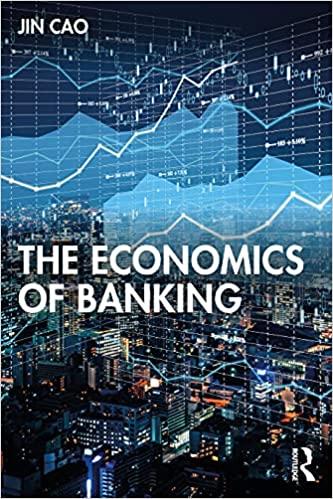Keeping the settings of the Dang-Gorton-Holmstrm-Ordoez model mostly unchanged, except that - The bank is the only
Question:
Keeping the settings of the Dang-Gorton-Holmström-Ordoñez model mostly unchanged, except that
- The bank is the only financial firm in the economy, that provides a mixture of deposit contract and bond for consumers. In \(t=0\), the bank collects early consumer's endowment \(e\), and provides a "take-it-or-leave-it" contract with the early consumer, including \(I\) being invested in bond and \(e-I\) invested in a safe asset that will return in \(t=1\) with gross return rate \(r\). Liquidity creation is costly, and the cost \(C\) is a strictly increasing and convex function of the face value of deposits, i.e.
\[C(e-I)=\frac{1}{2} c[(e-I) r]^{2} \text {, with } c>0 \text {, }\] in which \(c\) is a positive constant;
- Instead of lending to the entrepreneur, the bank invests in the good project itself. The good project will return \(f(I)\), with \(f(I)>0\) in \(t=2\) under good state \((\mathrm{G})\) with probability \(p\), or 0 under bad state (B). The state is not known in \(t=0\), but it is revealed in \(t=1\). The project cannot be liquidated in \(t=1\), and assume that
\[f^{\prime}(I)>0, f^{\prime \prime}(I)<0 \text {, and } \lim _{I \rightarrow 0} f^{\prime}(I)=+\infty \text {. }\]
The bond that is issued in \(t=0\) is backed by the good project;
- In \(t=1\), the state \(j, j=G, B\), is revealed. The bank sells the bond through a "take-it-or-leave-it" offer with the price \(b^{j}\) to a late consumer, and repays the early consumer using the proceeds from both safe asset and bond sale. In \(t=2\), the bank repays the bond holder-the late consumer-out of proceeds from the good project.
(a) Given the bank's investment portfolio in \(t=0\), compute the bank's optimal price offer \(b^{j}, j=G, B\), in \(t=1\).
(b) Given the bank's optimal price offer \(b^{j}\) in \(t=1\), compute the bank's optimal investment \(I\) in the good project in \(t=0\). Compute the expected utility for the early and the late consumer, respectively, as well as the expected utility for the bank, then compare with the outcomes in the planner's solution.
(c) Suppose that, in \(t=0\), before the bank meets the early consumer, a technological progress improves the return of safe asset, leading to a higher \(r\).
i. How will the bank adjust its optimal investment \(I\) in the good project?
ii. How does such adjustment depend on consumer's risk aversion, credit risk of the good project, and cost of liquidity creation?
Step by Step Answer:






